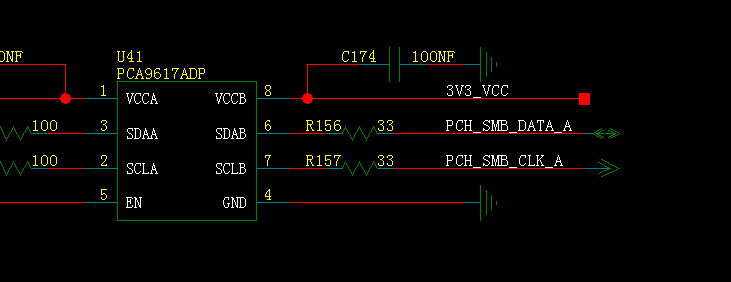Other Parts Discussed in Thread: TCA9617B
Hi Team,
My customer has a question about the placement of series resistor on TCA9617A design.
As below figure shown,could you help check the series resistor should place before the pull-up resistor or after the resistor and why?
Best Regards,
Nick Dai


